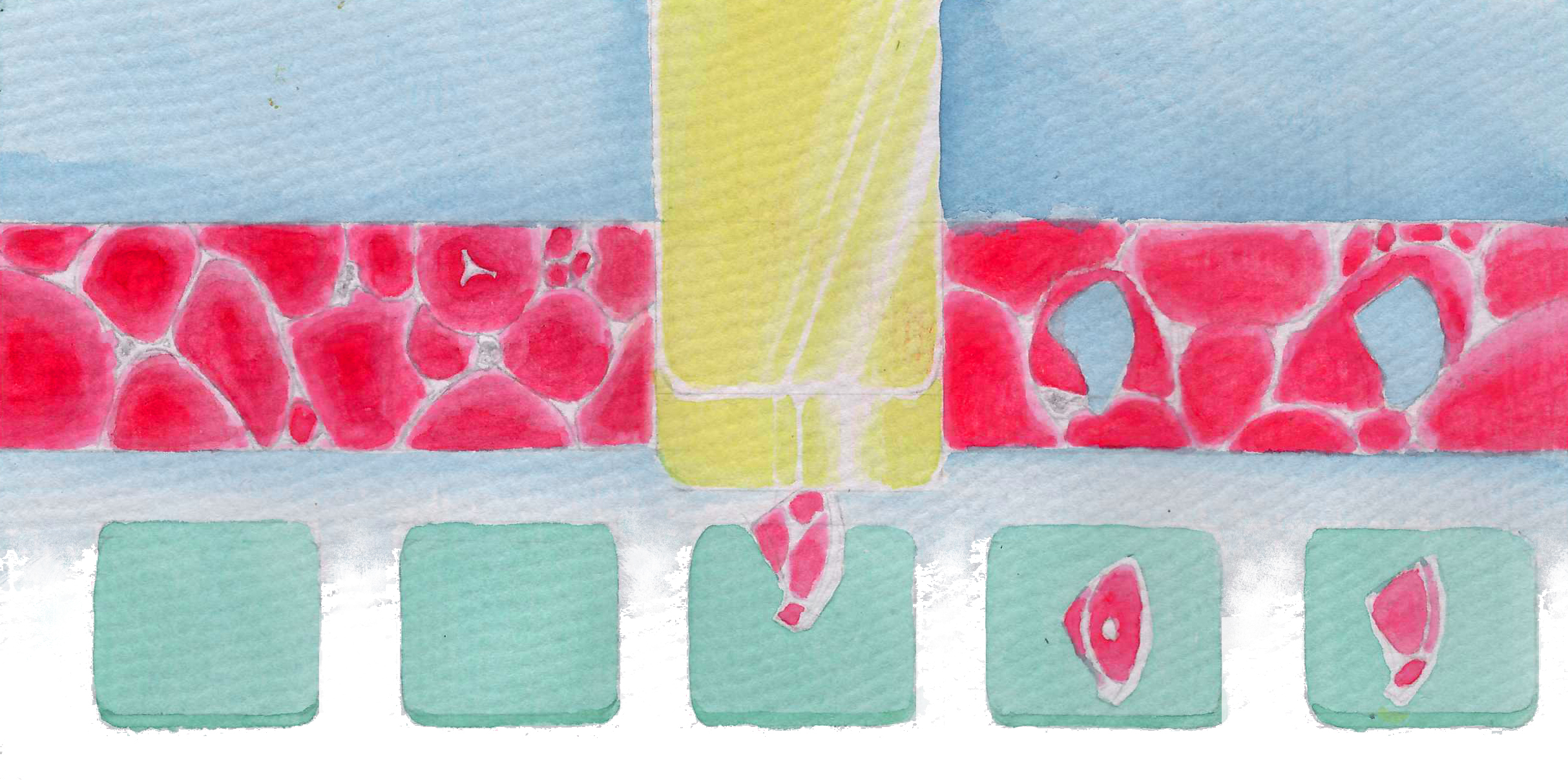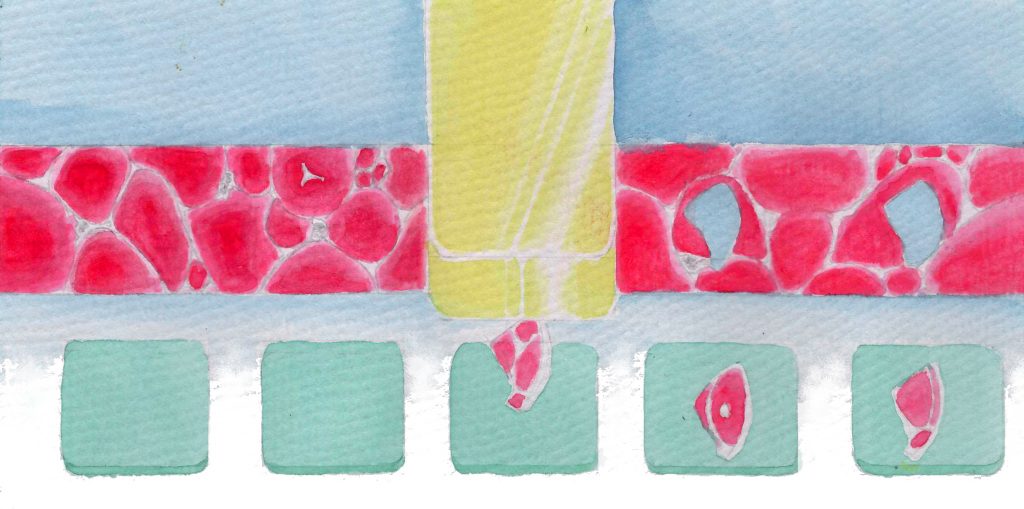By Tara Cosoleto | @tcosoleto – Image | Zikai Wang
Lab grown meat. Sounds like something from a science fiction novel, right?
Think again. This once far fetched possibility is already a reality, with a group of Dutch scientists from Maastricht University developed the first ever lab grown beef patty in 2013. Thanks to them we’re now living in a brave new world of artificial meat production.
The process is as clinical as you would expect. It begins when starter cells are extracted from a live animal though a biopsy and put into a sterile environment such as a petri dish. Then media, or serum, is taken from an unborn calf and placed into the dish with the cells. This culture media is now nutrient rich, providing the perfect environment for the cells to grow and multiply.
Professor Mark Post, who lead the team of Dutch scientists, said their beef patty was “biologically exactly the same as the meat tissue that comes from a cow”. But Doctor of Nutritional Food Science, Anneline Padayachee, said while biologically the same, the taste and texture of cultured meat will be very different.
“In an average piece of meat, there are different types of muscle fibers and different percentages of fat naturally occurring because the animal moves,” Dr Padayachee said.
“But cultured meat does not have any organs like a cow does. It doesn’t breathe or move. It is just cells growing in a static condition. So, there are no changes in texture and there won’t different flavor volatiles.”
It’s going to be different in a nutritional sense.
“To me, artificial meat is like taking a supplement- it’s been perfectly formulated to contain x, y and z,” Dr Padayachee said. “Whereas natural meat, like all forms of fresh fruit and vegetables, has an array of different nutrients.”
Despite the differences, changes in global population could see cultured meat becoming a staple in one’s diet. According to the Food and Agriculture Organisation of the United Nations (FAO), the global demand for meat will increase by more than two thirds in the next 40 years.
To meet this rise, the livestock industry will also have to increase its production. The scientists from Maastricht University believe this will result in methane carbon dioxide levels “significantly increasing”, which will cause a “loss of biodiversity”.
They said cultured meat is a “more sustainable option” but Queensland Beef Producer, Doug McNicholl, said this won’t be an issue for the prominent Australian livestock industry. He said while livestock does produce methane emissions, Australia’s beef and sheep industry, which takes up 47% of the continent, only “contributes approximately 10% of Australia’s greenhouse gas emissions”.
“Just look at those numbers in relation to other sectors of the economy,” McNicholl said. “Electricity, gas and water represent 35% of greenhouse gas emissions, residential is responsible for 10%, and manufacturing 13%. The livestock industry is no more, and even less, than any of the other sectors.”
“The cows grazing promotes the health of the natural ecosystem,” McNicholl said. “It can absorb CO2 from the atmosphere and sequestrate into the ground. The mining industry can’t do that. The residential industry can’t do that. And I can guarantee you, the factory set up to culture red meat can’t do that either.”
McNicholl said the livestock industry also supports the environment as it’s the only sector acting as a “carbon sink”.
Catalyst was unable to find the evidence to back up Mr. McNicholl’s claims, with many studies in claiming the opposite: that livestock production is harming the environment.
Cultured meat has also been touted as a way to solve the coming food crisis. But Dr Padayachee is skeptical.
“We already have enough food on this planet to feed everybody, it’s just that it’s not evenly distributed,” Dr Padayachee said. “Our diet should be two thirds plant based materials and a third protein. So saying this will solve the food insecurity issues is a very big statement because no one just eats a plate of meat.”
Dr Padayachee said artificial meat does have a “purpose and place in society”.
“If a food source like cultured meat can be grown to have a specific nutritional profile, which can keep populations in developing and famine-affected countries alive- then that’s great, that’s amazing,” Dr. Padayachee said. “There’s a lot of potential for that.”
There have been suggestions cultured meat could be coming to a plate near you as early as 2030. But would Australians jump at the chance to try artificial meat? Dr. Padayachee doesn’t think so.
“It could be available relatively soon but it depends on whether or not the consumer is willing to accept it,” Dr Padayachee said. “Australia does not even accept genetically modified foods, so cultured meat might be a harder sell.”
Lab grown meat is still the unknown. People will always be skeptical of something deemed to be ‘artificial’. So have a think, would you eat cultured meat?
“I’d eat it because I’m curious. I’m a yes-man and I’ll try anything once,” McNicholl told me.
“But I wouldn’t eat it in terms of supporting the industry as a substitute for livestock production.”
“I would be willing to try it,” Dr. Padayachee agrees.
“But on a daily basis, if I saw there was a tray of artificial meat in the shops versus a steak, I would definitely pick the natural steak.”



